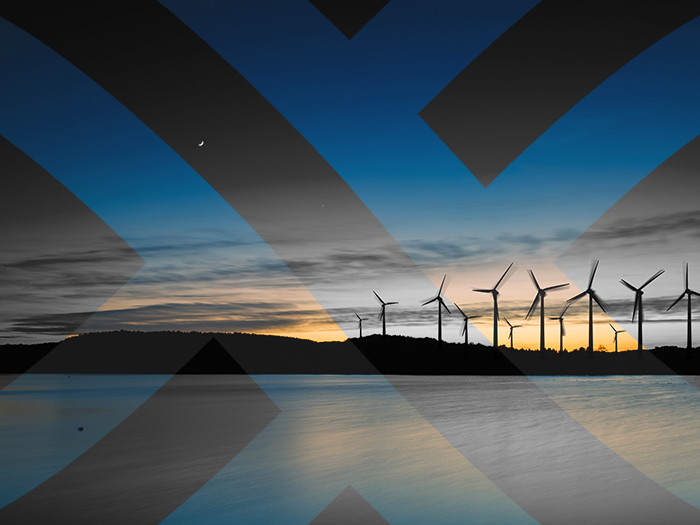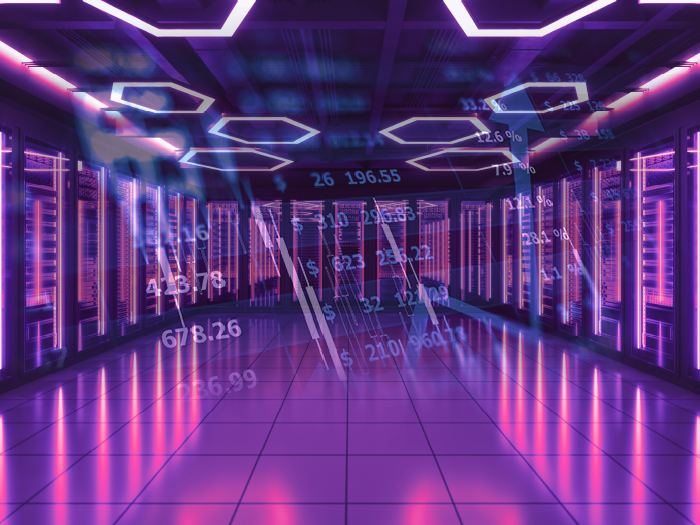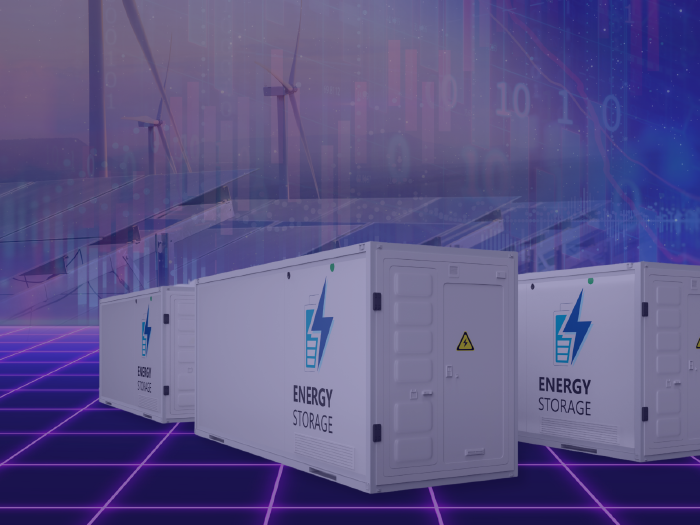News
better business decisions
Posted 8 months ago | 5 minute read

Artificial intelligence and energy: growing demand and sustainable solutions
Artificial intelligence (AI) is transforming modern life, enhancing everything from accessibility to automation and data insights. However, AI’s exponential growth raises important questions about its energy consumption and environmental footprint. As demand for AI intensifies, so does the urgency to implement environmentally conscious strategies.
AI is scaling fast—everywhere. And while the United States leads in development, Ireland is quickly emerging. In this article we examine the growth and challenges of AI and how advanced technologies and services are emerging as key in reducing its environmental impact while supporting a smarter energy system.
Understanding the impact
The environmental footprint of AI stems largely from the immense computing power it requires. Every phase of an AI system’s life—data gathering, model training, deployment, and inference—consumes energy.
AI’s environmental impact is typically categorised into three key areas:
- Direct impact: carbon emissions from electricity use, water consumption for cooling, mining for raw materials, and toxic e-waste production
- Indirect impact: emissions associated with AI applications (e.g., in transportation or manufacturing) and the energy use of machine learning algorithms
- Higher-order effects: social and environmental issues exacerbated by biases or systemic inefficiencies within AI systems
Data centres: digital engines with a carbon cost
Data centres are the backbone of AI infrastructure, hosting the processing units required to run advanced models. However, these facilities demand significant quantities of electricity.
The number of data centres has increased from 500,000 in 2012 to 8 million today, and experts predict that AI’s escalating energy needs will sustain this rapid growth. In 2022, they accounted for roughly 1% of global electricity usage, and in Ireland alone, they made up 17% of national consumption—a figure set to double by 2026. AI-powered virtual assistants such as ChatGPT use more energy than traditional search engines. According to the International Energy Agency (IEA), a single ChatGPT request requires ten times more electricity than a Google Search.
In the United States, the US AI market, valued at $42B in 2023, is forecast to grow to over $233B by 2030. Yet, this growth also comes with rising demand for electricity, computing power, and physical infrastructure—adding to the carbon and resource footprint of AI technologies. As of 2024, data centres are estimated to have consumed ~25GW of power, with projections indicating an increase to over 80GW by 2030.
Ireland has also become a digital and AI innovation hub, driven by supportive policies. AI is expected to add €250B to Ireland’s economy by 2035. Findings by the Central Statistics Office for Ireland (CSO Ireland) have suggested that in 2023, data centres accounted for 21% of the total usage of metered electricity. This level of consumption demonstrated that electricity consumption by data centres increased by one-fifth (20%) between 2022 and 2023.
But a common challenge is emerging: the need to power AI responsibly. As data centres scale to meet growing demand, their electricity use, water consumption, and carbon emissions are rising.
The role of smart energy solutions
But AI can also be part of the solution. Despite its environmental impact, AI also has the potential to reduce its footprint. AI algorithms can identify patterns in data, detect anomalies, and anticipate and forecast future results. AI might help governments, organisations, and individuals monitor environmental changes and make more responsible decisions. AI may also accelerate innovations in energy technologies.
By using AI to optimise energy systems, balance supply and demand, and support the shift to renewables, AI can support the wider energy transition. This is where smart grid and energy intelligence platforms like GridBeyond come in.
GridBeyond is helping transform AI-hosting data centres into active participants in the clean energy transition. By enabling real-time energy optimisation, renewable energy integration, and participation in grid services, these platforms allow businesses to grow sustainably—turning energy from a cost centre into a strategic asset.
With smart platforms like GridBeyond’s, data centres can transform from energy consumers into active grid participants—reducing emissions and supporting a cleaner, more resilient energy future.
Three steps to sustainable AI at scale
Data centres are perfectly positioned to support the transition to a carbon-free economy. Standby generators, UPS and on-site batteries can provide significant volumes of energy flexibility to the grid, without any negative impact on operations. Combined with green energy purchasing strategies, the high energy use of data centres brings an opportunity to drive forward the net zero transition.
- Add a battery to manage grid connection This approach not only overcomes grid connection limitations but also mitigates potential delays, providing a robust and reliable power solution tailored to your needs. Additionally, it enhances resilience and operational efficiency.
- Manage costs using load and battery By defining a strike price based on the marginal cost of running the genset, you can reduce overall energy costs significantly. This approach allows you to shift load from the grid to your generators and batteries when electricity prices are highest, minimising your energy expenses.
- Utilise flexibility from UPS By understanding load factor dynamics, data centres can strategically optimise UPS usage— leveraging spare capacity at low-load sites to unlock revenue from demand response and grid services—transforming energy into a profit centre.
GridBeyond works with the biggest global brands to deliver solutions to support data centres revolutionise their energy strategy and accelerate the journey towards net zero while ensuring downtime and guaranteeing customer SLAs are not impacted. We help data centres achieve net-zero carbon emissions with actionable, realistic sustainability programs. Our experts identify actionable opportunities to reduce energy consumption and costs, optimise assets, and implement sustainability strategies that achieve net zero targets while generating a tangible return on your investment.






